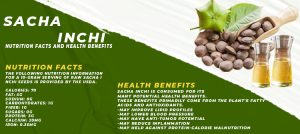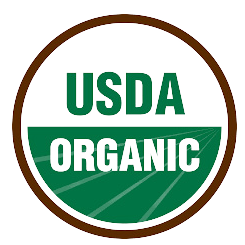
Sacha inchi (Plukenetia Volubilis) is a perennial plant that produces large, edible seeds. It is rich in nutrients like omega-3 and omega-6 fatty acids, protein, and antioxidants.
Like flaxseed oil, sacha inchi is a potent source of fatty acids. It is exceptionally high in alpha-linolenic acid (ALA), a type of omega-3 fatty acid found in plants, and linoleic acid, a variety of omega-6 fatty acids.
Sacha Inchi Nutrition Facts
Calories: 70
Fat: 5g
Sodium: 0g
Carbohydrates: 1g
Fiber: 1g
Sugars: 0g
Protein: 3g
Calcium: 20mg
Iron: 0.36mg
Health Benefits
Sacha inchi is consumed for its many potential health benefits. These benefits primarily come from the plant’s fatty acids and antioxidants.
May Improve Lipid Profiles
Sacha inchi can be used in whole, powdered, or oil forms. Sacha inchi oil may have beneficial effects on the lipid profiles of patients with hypercholesterolemia (aka high cholesterol). When taken orally, sacha inchi oil may reduce total cholesterol and increase good HDL cholesterol.
May Lower Blood Pressure
There is a lot of research that supports the ability of sacha inchi to lower “bad” cholesterol and raise “good” cholesterol levels. Research also suggests that sacha inchi may help to lower blood pressure.
May Have Anti-Tumor Potential
Sacha inchi may have antitumor activity, but there is little information on how it prevents tumors. Some animal studies show promising results. Sacha inchi may protect against tumor induction after exposure to carcinogens. The antitumor properties of sacha inchi may be related to the high content of alpha-linolenic acid (ALA), which may have its own antitumor activity.
May Reduce Inflammation
Inflammation in the body is associated with diseases like stroke, chronic respiratory diseases, cancer, obesity, diabetes, and heart disorders. Chronic inflammatory diseases are a significant cause of death.
May Help Against Protein-Calorie Malnutrition
In many developing nations, malnutrition is a public health crisis. Some nations are moving away from animal protein and towards plant protein.





